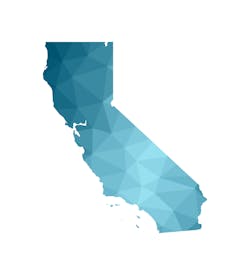Twelve years ago, the State of California tried but failed to unite stakeholders around a single vision of a statewide health information network. But in the wake of the pandemic, efforts are under way in the state Legislature to try again, and more than a dozen healthcare organizations have come together to show support for a statewide network.
As a new report from the California Health Care Foundation points out, the health information exchange (HIE) ecosystem across California is composed of a combination of direct exchange between providers, the use of national networks, and more than 15 regional health information organizations (HIOs). “This fragmented model delivers inconsistent and incomplete solutions that don’t provide all the critical information needed to care for the state’s residents, don’t provide access to all the service providers who need data, and don’t scale to provide state health care leaders with the access to data they need,” says the report written by Manatt Health executives.
The newly formed Connecting for Better Health Coalition supports three key policy goals:
• The creation of infrastructure for a single statewide network that leverages existing regional efforts and supports every stakeholder who wishes to join.
• Cementing an ongoing source of funding – potentially combining state and federal resources, as other states have done.
• Encouraging every provider and health plan to participate in the network, and share necessary data, so that the whole care team, regardless of where they are in the state, has the information they need to serve their patients.
On Jan. 8, Gov. Gavin Newsom unveiled a budget proposal that would allow California to connect its health information systems into one statewide network. There are also multiple proposals being considered by the Legislature that would take steps toward creating a statewide HIE network, including requiring HIE participation for those involved in Medicaid and CHIP programs. The Connecting for Better Health Coalition said it looks forward to supporting these efforts during the 2021 session.
Among the coalition members are Aledade, Anthem Blue Cross, Blue Shield of California, the California Black Health Network, the Inland Empire HIO, Manifest MedEx and the Riverside University Health System.
In a statement, Manifest MedEx CEO Claudia Williams said, “We’ve been building HIE infrastructure in California for years. The COVID-19 pandemic has highlighted that it is truly time for our state to build statewide HIE capacity, leveraging the progress and investments we have already made. All patients deserve care that is personalized, high quality, equitable and affordable. Better information sharing is critical to achieve these goals.”
Among the recommendations in the Manatt Health report for CHCF are that the state establish an office within state government charged with establishing the state’s vision, goals, and priorities for advancing health information exchange. “The office could be endowed with rulemaking authority that aligns regulatory, contracting, licensing, and financing levers available to state government agencies to advance HIE,” the authors note. “It could also be charged with developing recommendations to harmonize state law that conflicts with federal law.”
The report also noted that states with more comprehensive HIEs have used multiple policy levers, like mandates with contracting and financing levers, to stimulate participation in data-sharing activities. “To complement HIE participation requirements in California, state purchasers including the California Department of Health Care Services (DHCS), Covered California, and CalPERS could establish contracting requirements with payer partners requiring their provider networks to participate in HIE activities that meet state policy goals.”


